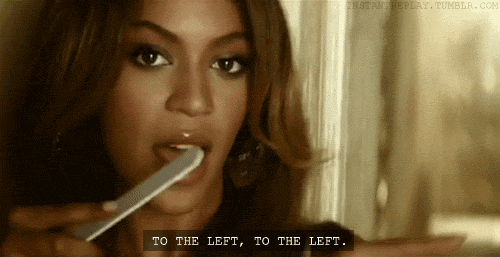Andrew Goodwin's theory
Andrew Goodwin believed that in every music video, at least one of six features can be recognised. These features are:






Music videos establish genre characteristics

Beyonce's 'Single Ladies' is a typical pop/dance genre. The music video supports this because the artist (Beyonce) alongside two dancers share a routine in time with the music. The dance routine is of the typical pop genre due to the quick pace and dramatic gestures, giving an energetic tone to the video. The high contrast lighting helps to engage the audience alongisde minimal camera movements, allowing the dancers to be the main focus of the video.



A relationship can be found between lyrics and visuals

'Irreplaceable' by Beyonce is a perfect music video which supports Goodwins theory that there is a relationship between lyrics and visulas. As the lyrics read 'to the left' there is an extreme close up of the singer pointing to the left. Later, the lyrics read 'everything you own in the box to the left' as the camera cuts to a wide shot of her ex-boyfriend carrying a large brown box full of his belongings. Here, the lyrics and visuals support each other by displaying the same vocal and visual message.



A relationship is present between the music and visuals

In music videos, the music and visuals either illustrate, amplify or condradict each other. When the relationship is contradictory, the music opposes the video. When amplifying, the camera movements and angles are repeatedly used to manipulate the viewer into remembering the visuals. An example is Amy Winehouse - Rehab, where the camera repeatedly cuts to the band that are present in the video but also play the score. If the relationship is illustrative, the video explains what the music is trying to tell the viewer.



The record label will use many close-ups of the artist, often including visual motifs
For many upcoming, and already successful artists, their record label will ask for music videos to include high definition close-ups for the viewer to remember the artists face after the video has ended. One example is Justin Bieber whose videos repeatedly show close up shots of his face. The singers may also have reoccuring props such as chains, money or cars depending on the genre, which emphasise their fame and wealth.




Voyeurism is regularly shown in female artists music videos, as well as the 'notion of looking' breaking the 4th wall

In many female artist videos, voyuerism is shown to make the woman look sexually appealing, the camera often tilting up and down, with the perspective of a male gaze. This apparently boosts sales, even if it derogatory to women. Additionally, the 'notion of looking' is when the artist (male/female) breaks the fourth wall and looks straight into the camera lens. An example of both of these is Selena Gomez - Good for you. Throughout the video, Selena repeatedly looks into the camera, wearing little/no clothes, supporting the idea of voyuerism.



The use of inter-textual references
Intertextuality is when a text's meaning is defined by another text. It is also when one text is a transformation of another text. In media, original work is adapted by another person, changing the style while the meaning remains the same. This is shown in music videos, when one artist includes another artists work/style in their video.